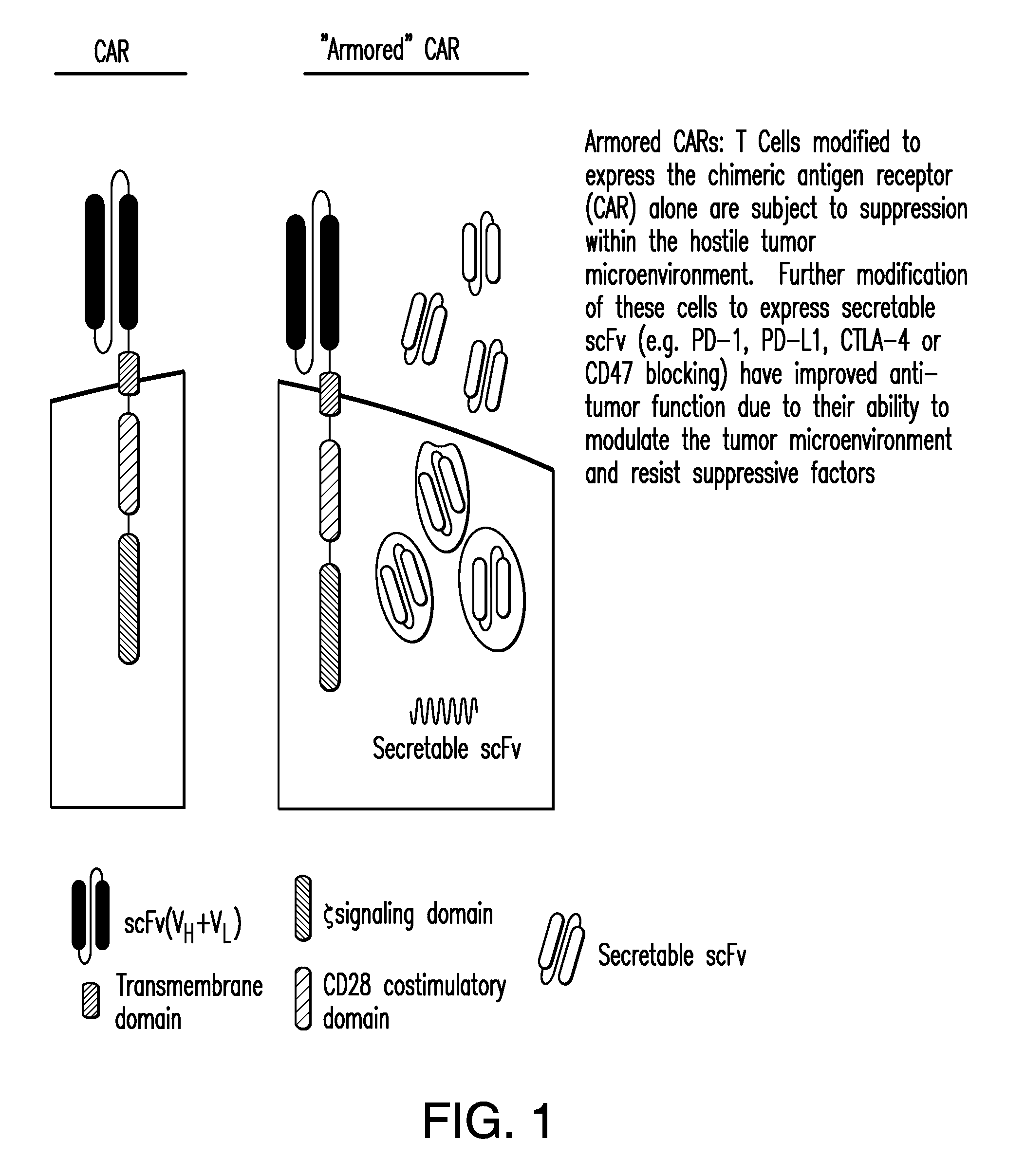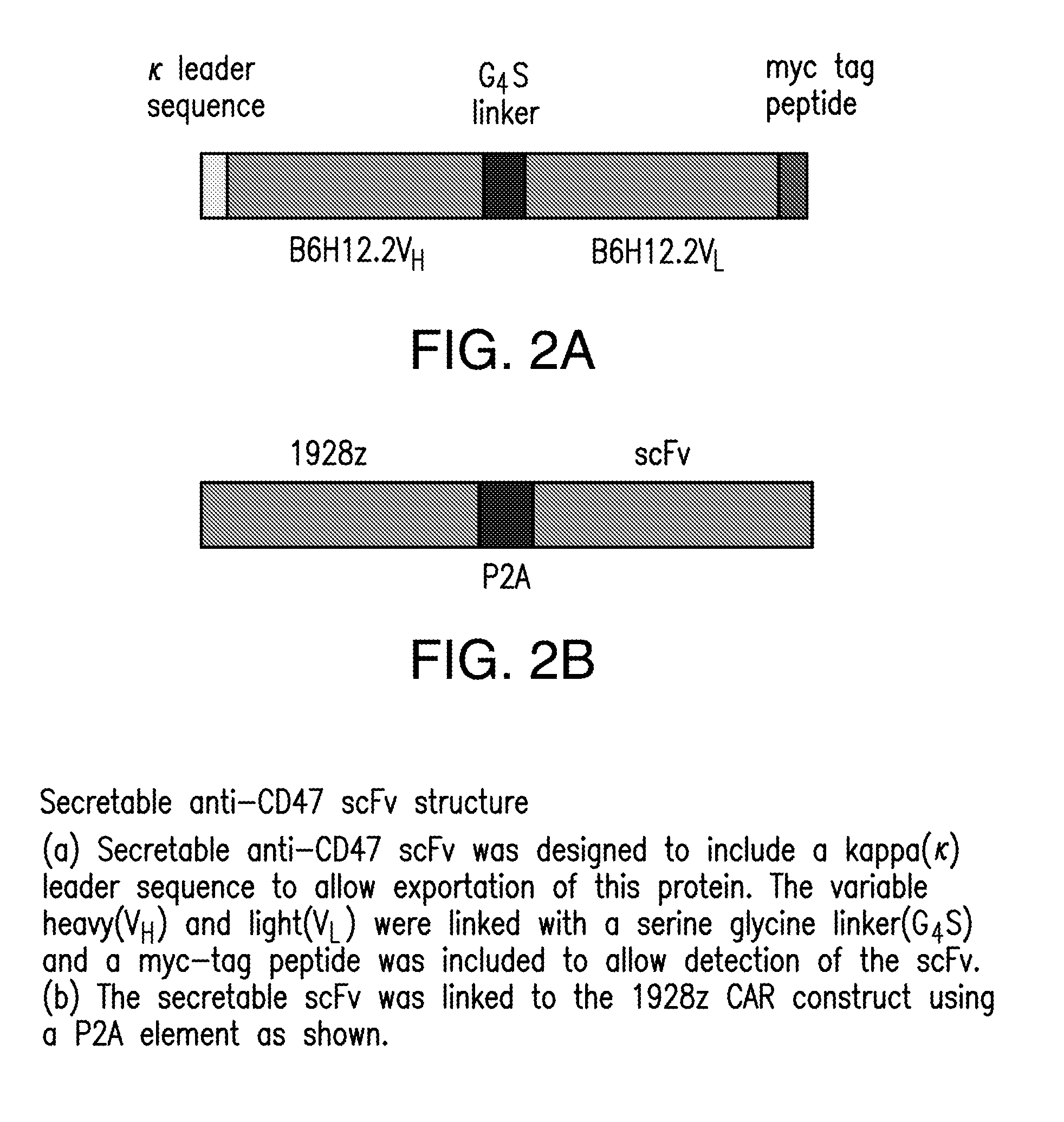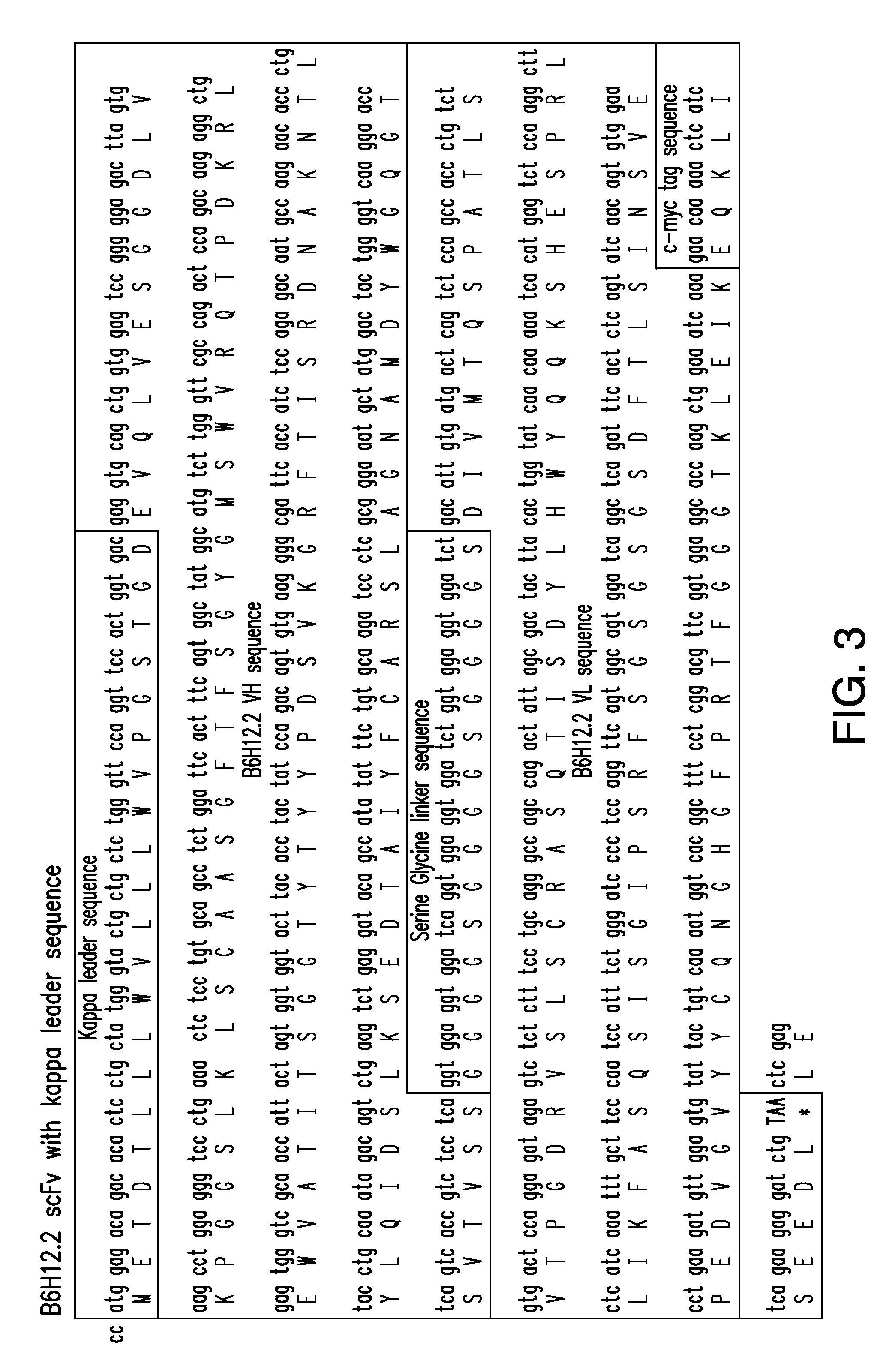Compositions and methods for immunotherapy
a technology of immunotherapy and compositions, applied in the field of compositions and methods for immunotherapy, can solve problems such as the microenvironment and pose challenges
- Summary
- Abstract
- Description
- Claims
- Application Information
AI Technical Summary
Benefits of technology
Problems solved by technology
Method used
Image
Examples
example 1
T Cells Co-Expressing a Chimeric Antigen Receptor (CAR) and an Anti-SCD47 scFv Eradicated Tumors
[0195]An scFv that specifically binds human CD47 was generated and human peripheral blood T cells modified with this scFv and a CAR recognizing a tumor antigen (CD19), demonstrated in vitro anti-tumor efficacy as well as enhanced anti-tumor efficacy in a preclinical model.
[0196]Constructs comprising 1928z-2A-B6H12.2 (FIGS. 1-5) were generated as confirmed by sequencing the CAR and scFv sequences. In addition, control constructs were generated with a CAR specific for the ovarian cancer antigen, MUC-CD, termed 4H1128z (FIG. 6). Stable producer cell lines were generated for the constructs utilizing the kappa leader sequence, and verified by flow cytometry (FIG. 7A). Supernatant from the packaging cell lines, containing secreted anti-CD47 scFV was able to block CD47 antibody from binding to Nalm-6 and Raji tumor cells in a flow cytometry based assay. Tumor cells incubated with supernatant fro...
example 2
T Cells Co-Expressing a Chimeric Antigen Receptor (CAR) and an Anti-Human PD-1 scFv Had Increased Proliferation and Retained Expression of CAR
[0199]An anti-human PD-1 scFv was generated based on the VH and VL chains from an anti-PD-1 antibody (clone 5C4) (U.S. Pat. No. 8,008,449). The 5C4 scFv was designed to include the kappa leader sequence, a serine glycine linker and the c-myc tag (FIG. 11). This scFv construct was cloned into SFG retriviral backbone to generate 1928z-2A-5C4 and 4H1128z-2A-5C4 (FIGS. 12 and 13). To develop a high affinity scFv that binds to human PD-1 (e.g., for expression in a 1928z / 4H1128z CART cell), a human antibody phage display library is screened to determine scFvs that specifically bind human PD-1 (and potentially mouse PD-1).
[0200]Stable 293Glv9 packaging cell lines were produced and expression of the 1928z CAR and 4H1128z CAR was assessed by flow cytometry (FIG. 14). Supernatant from these packaging cells was utilized to transduce human peripheral bloo...
example 3
Co-Expression of a Chimeric Antigen Receptor (CAR) and an Anti-Mouse PD-1 scFv Stimulates Mouse T Cells
[0202]An anti-mouse PD-1 scFv was generated based on the V H and VL from the anti-PD-1 antibody clone J43 (U.S. Pat. No. 7,858,746 to Honjo et al.). The J43 scFv was designed to include the mouse kappa chain leader sequence, a serine glycine linker and the c-myc tag (FIG. 18). This scFv construct was cloned into SFG retroviral backbone expressing the CAR targeting human CD19 or human MUC-CD that signals through mouse C28 and mouse CD3zeta, therefore stimulating mouse T cells. These constructs 19m28mz-IRES-J43 (FIG. 19) and 4H11m28mz-IRES-J43 (FIG. 20) are used to generate stable Phoenix packaging cells lines and genetically modify primary murine T cells, as previously described (Lee et al., Cancer Res 2011, 71(8):2871). Mouse 19m28mz and 19m28mz-IRES-J43 T cells are cultured with EL4 thymoma tumor cells that have been modified to express human CD19 and mouse PD-L1, proliferation of...
PUM
| Property | Measurement | Unit |
|---|---|---|
| temperatures | aaaaa | aaaaa |
| temperatures | aaaaa | aaaaa |
| temperatures | aaaaa | aaaaa |
Abstract
Description
Claims
Application Information
 Login to View More
Login to View More - R&D
- Intellectual Property
- Life Sciences
- Materials
- Tech Scout
- Unparalleled Data Quality
- Higher Quality Content
- 60% Fewer Hallucinations
Browse by: Latest US Patents, China's latest patents, Technical Efficacy Thesaurus, Application Domain, Technology Topic, Popular Technical Reports.
© 2025 PatSnap. All rights reserved.Legal|Privacy policy|Modern Slavery Act Transparency Statement|Sitemap|About US| Contact US: help@patsnap.com



